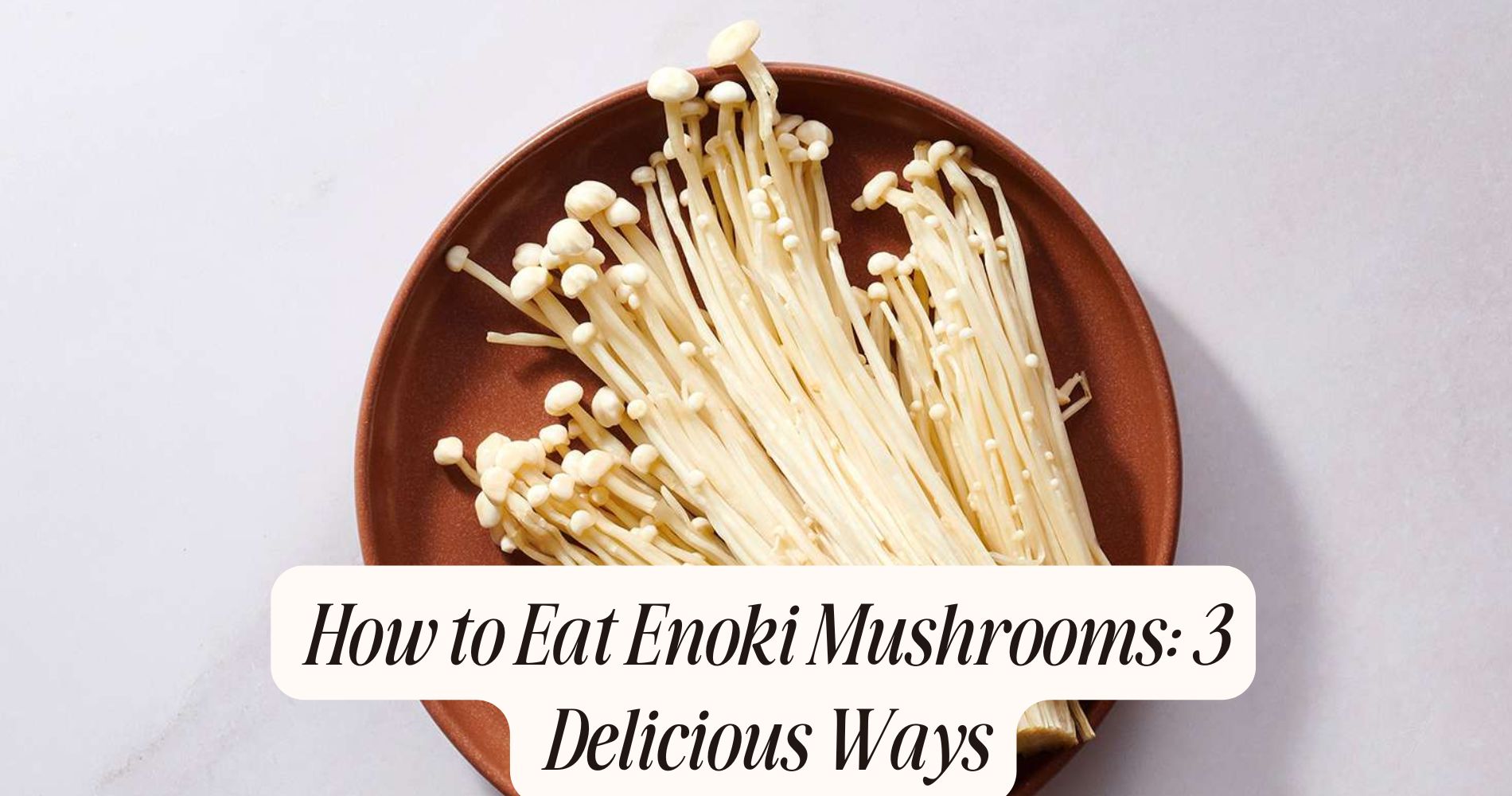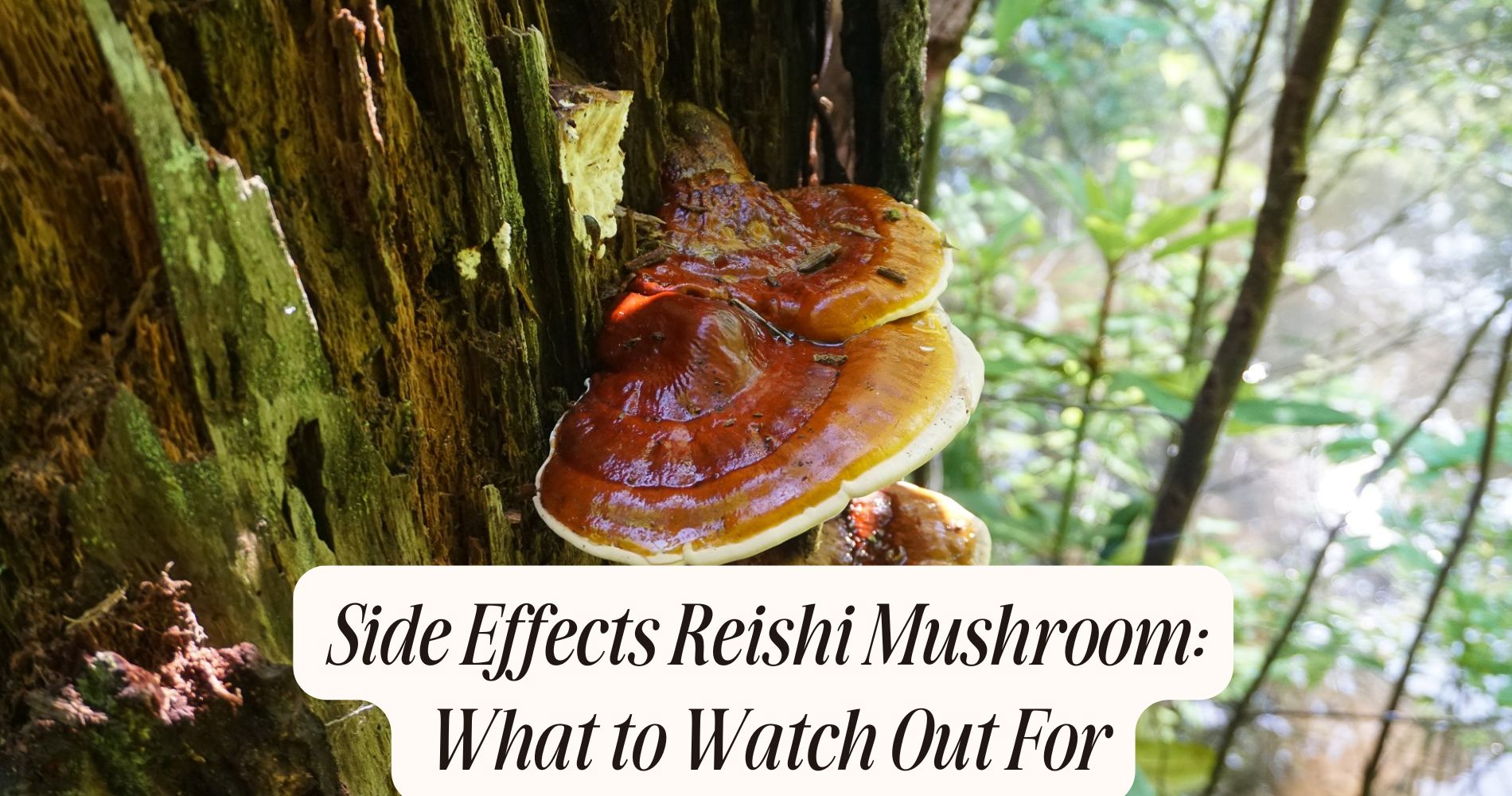
How to Grow Maitake Mushrooms? Step-by-Step Guide
How to grow maitake mushrooms? To grow maitake mushrooms, start by selecting a nutrient-rich substrate like hardwood sawdust. Prepare your growing environment by sterilizing the substrate and maintaining a temperature of 70°F with humidity around 85-95%. Inoculate the substrate with clean techniques, allowing for a 14-21 day incubation for mycelium growth. Once ready, trigger fruiting conditions with proper light, humidity, and airflow. Finally, harvest the mushrooms when caps are fully developed. Learn more about optimizing each stage for better yields.
Understanding Maitake Mushrooms
Maitake mushrooms, scientifically known as Grifola frondosa, are a flavorful and nutritious addition to culinary dishes.
These mushrooms offer numerous maitake benefits, including immune system support and potential anti-cancer properties, making them a valuable food choice. Their unique, rich taste enhances soups, stir-fries, and pasta, appealing to a wide range of palates.

You can also incorporate them into risottos and gourmet pizzas for an elevated flavor profile. When cooked, maitake mushrooms develop a delightful texture that complements various ingredients.
Their versatility allows you to experiment with different seasonings and cooking methods, ensuring they'll fit seamlessly into your meals. Understanding their culinary uses and health benefits will help you appreciate how to incorporate them effectively in your cooking.
Selecting the Right Substrate
Choosing the right substrate is essential for successful maitake mushroom cultivation. Various substrate types can support your growth efforts, including hardwood sawdust, straw, and agricultural waste. Each type offers unique benefits—hardwood sawdust is nutrient-rich, while straw provides a lighter structure for mycelium colonization.
When selecting a substrate, consider its moisture retention and sterility, as these factors considerably impact mushroom development. Proper substrate preparation is critical; you’ll need to pasteurize or sterilize it to eliminate competing organisms.
Mixing in supplements like bran can enhance nutrient content, promoting robust growth. Ultimately, your choice of substrate and its preparation will lay the foundation for a fruitful maitake harvest, ensuring you achieve the best possible results in your cultivation endeavors.

Preparing the Growing Environment
To successfully grow Maitake mushrooms, you need to maintain specific environmental conditions.
The ideal temperature range for their growth is between 55°F and 75°F, while humidity levels should remain around 85% to 95%.
Ensuring these factors are met is essential for optimal mushroom development.
Ideal Temperature Range
When cultivating Maitake mushrooms, maintaining the right temperature range is essential for peak growth and yield. Generally, the ideal temperature for most Maitake varieties is between 60°F and 75°F (15°C to 24°C). Within this range, you’ll promote healthy mycelium colonization and fruiting.
Be aware that temperature fluctuations can stress the mushrooms, leading to reduced yields or poor quality. During the incubation phase, aim for temperatures closer to 70°F (21°C), while slightly cooler temperatures can initiate fruiting.
Monitoring your growing environment closely will help you avoid extreme conditions that can hinder development. By ensuring consistent temperatures, you can maximize the success of your Maitake cultivation.
Humidity Levels Required
While maintaining the right humidity levels is essential for growing Maitake mushrooms, you should aim for a relative humidity of 85% to 95% during the fruiting phase.
Proper humidity measurement is vital to guarantee successful fruiting and ideal growth. You can achieve this by using hygrometers or moisture meters to monitor the environment regularly.
If humidity levels drop below the desired range, implement humidity control methods such as misting or using humidifiers. Conversely, if levels rise too high, improve ventilation or remove excess water.
Maintaining consistent humidity will help prevent contamination and promote healthy mushroom development, securing a fruitful harvest.
Keep a close eye on these levels throughout the growing process for the best results.

Inoculating the Substrate
Inoculating the substrate is a critical step in cultivating Maitake mushrooms.
You'll need to choose the right substrate, apply effective inoculation techniques, and maintain ideal environmental conditions for successful growth.
Each of these factors plays an essential role in ensuring your mushrooms thrive.
Choosing the Right Substrate
Choosing the right substrate is vital for successfully inoculating your Maitake mushrooms, as it directly influences their growth and yield.
Various substrate types can support different Maitake varieties, so it's important to select one that aligns with your goals. Common substrates include hardwood sawdust, straw, or a mix of both, which provide the necessary nutrients and structure for best mycelial colonization.
Make sure your substrate is free from contaminants and has the right moisture content, typically around 60%.
If you're targeting specific Maitake varieties, consider their unique requirements, as some may prefer specific substrate types for enhanced performance.
Inoculation Techniques Explained
Once you've prepared your substrate, the next step is to inoculate it with Maitake mushroom spawn. You can choose from various spawn types, such as grain spawn or sawdust spawn, depending on your preference and the specific inoculation methods you plan to use.
For ideal results, make certain your substrate is sterilized and cooled before inoculation.
To inoculate, use a clean technique; wear gloves and a mask to minimize contamination. If using grain spawn, mix it thoroughly into the substrate, guaranteeing even distribution.
For sawdust spawn, sprinkle it evenly on the surface and then mix lightly.
Remember to label your containers with the date and spawn type to track your progress effectively. Proper inoculation is vital for a successful Maitake mushroom yield.
Ideal Environmental Conditions
After inoculation, maintaining the right environmental conditions is key to fostering healthy Maitake mushroom growth.
You need to focus on ideal growing conditions, which include temperature, humidity, and light. Aim for a temperature range of 60-70°F (15-21°C) for mycelium colonization.
Humidity levels should remain above 85% during this phase to prevent drying out. Once the mycelium fully colonizes the substrate, you can lower humidity slightly and introduce indirect light to encourage fruiting.
Keep in mind that environmental factors such as air circulation are also essential; stagnant air can lead to contamination.
Incubation Period
The incubation period for maitake mushrooms is a vital phase in their cultivation, as it prominently influences the yield and quality of the final product.
Typically, the incubation duration lasts between 14 to 21 days, depending on the environmental conditions and substrate used. During this time, the mycelium growth occurs, spreading throughout the substrate and establishing a strong foundation for fruiting.
You should monitor the growth closely, as ideal conditions can accelerate mycelium colonization. Make sure the substrate remains undisturbed to allow the mycelium to fully integrate.
After the incubation period, you'll notice a white, fluffy mycelium covering the substrate, indicating it’s ready for the next stage of cultivation. Proper management during this phase is essential for successful harvests.

Maintaining Humidity and Temperature
Successful mycelium colonization sets the stage for careful regulation of humidity and temperature, which are critical for fruiting.
Maintain humidity levels between 85% and 95% to promote healthy growth. You can achieve this by misting your substrate regularly or using a humidifier.
Temperature should ideally range from 60°F to 70°F, so monitor it closely with a thermometer.
Ensure proper air circulation to prevent stagnant conditions that can lead to mushroom pests. Use fans or ventilation systems to keep the air moving without directly blowing on the mushrooms.
This balance of humidity, temperature, and air circulation creates an ideal environment, allowing your maitake mushrooms to thrive while minimizing the risk of contamination and pests.
Triggering Fruit Body Development
To trigger fruit body development in maitake mushrooms, you’ll need to create ideal environmental conditions.
Focus on achieving the right moisture and humidity levels, as well as providing adequate light exposure.
These factors are essential for stimulating robust and healthy growth.
Ideal Environmental Conditions
While growing maitake mushrooms, understanding the ideal environmental conditions is essential for triggering fruit body development.
You'll need to maintain a balance of ideal moisture and suitable airflow to encourage robust growth. Aim for a relative humidity level of around 85-95%, which helps in retaining moisture without creating an overly damp environment. This moisture level supports the mycelium while also preventing contamination.
Simultaneously, verify there's sufficient airflow; stagnant air can lead to poor growth or even disease. Good air circulation facilitates gas exchange, which is critical for the mushrooms' metabolic processes.
Monitoring these conditions closely will help you create an environment conducive to healthy maitake fruiting, ultimately leading to a successful harvest.
Moisture and Humidity Levels
Maintaining ideal moisture and humidity levels is essential for triggering fruit body development in maitake mushrooms. You'll need to guarantee proper moisture retention in your growing substrate, as it greatly influences growth. Aim for a substrate moisture content of around 60-70%. This level promotes mycelial colonization and sets the stage for fruiting.
Humidity control is equally vital during the fruiting phase. Keep humidity levels between 85-95% to prevent drying out your mushrooms. Regularly mist the growing area or use a humidity dome to maintain these levels.
Additionally, monitor air circulation to avoid excess condensation, which can lead to contamination. By carefully managing moisture and humidity, you’ll enhance your chances of a successful harvest of delicious maitake mushrooms.
Light Exposure Requirements
Light exposure plays an essential role in triggering the fruit body development of maitake mushrooms. To optimize growth, you need to manage light intensity carefully.
Ideally, maitake mushrooms require indirect sunlight exposure, as direct sunlight can damage the delicate fruit bodies. Aim for a light intensity of around 100 to 500 lux, which mimics the filtered light found in their natural habitat.
When you introduce light, do so gradually, allowing the mycelium to adjust. Typically, a 12-hour light and 12-hour dark cycle works best for stimulating fruiting.
Harvesting Maitake Mushrooms
Harvesting Maitake mushrooms typically occurs when the caps are fully developed but still tender, usually between 5 to 10 inches in diameter.
To guarantee superior quality, use sharp harvesting techniques, such as cutting the stem at the base with a knife, rather than pulling them from the substrate. This minimizes damage to the mycelium, promoting future growth.
After harvesting, conduct proper post-harvest processing by gently brushing off any debris and avoiding excessive moisture. Store the mushrooms in a cool, dark place to maintain freshness.
It’s essential to handle them carefully, as they can bruise easily. By following these steps, you’ll guarantee that your Maitake mushrooms are in prime condition for cooking or further processing.
Storing and Using Your Harvest
Once you've harvested your Maitake mushrooms, proper storage and utilization are essential to preserving their flavor and nutritional value.
To store them, keep your mushrooms in a paper bag in the refrigerator, which allows for air circulation and prevents moisture buildup. Avoid plastic bags as they can cause spoilage.
For longer storage, consider dehydrating your mushrooms, which enhances their umami flavor and extends shelf life.
When you're ready to use them, rehydrate dried Maitake by soaking in warm water. You can then incorporate them into various cooking methods, such as sautéing, roasting, or adding them to soups and stews.
These techniques will help maintain their taste and maximize the health benefits of your harvest.

Troubleshooting Common Issues
As you cultivate Maitake mushrooms, you may encounter several common issues that can hinder their growth and quality. One frequent problem is the presence of common pests such as gnats or mites, which can damage your crop.
Regularly inspect your growing environment and use appropriate pest control methods to mitigate these threats.
Another issue is contamination, which can arise from improper handling or unclean equipment. To guarantee contamination prevention, always sterilize tools and substrates before use.
Maintain proper humidity and temperature levels, as these factors greatly influence mushroom health. If you notice discoloration or unusual odors, it’s essential to address these symptoms immediately to prevent the spread of contamination.
Fuel Your Day with SUPER MUSHROOM GUMMIES
Looking for a convenient and tasty way to experience the benefits of mushrooms? Well Gummies’ SUPER MUSHROOM GUMMIES are your perfect solution! With 10 types of functional mushrooms, these vegan gummies naturally fuel your brain, boost focus, and support immune health. Enjoy the delicious wild berry flavor, as tasty as your favorite candy, without the jitters or crash. Energize your body and sharpen your mind all day long with SUPER MUSHROOM GUMMIES!
Frequently Asked Questions
Can I Grow Maitake Mushrooms Indoors or Outdoors?
You can grow maitake mushrooms both indoors and outdoors. For indoor cultivation, guarantee controlled temperatures and humidity. Outdoors, they thrive in suitable conditions like shaded areas with rich, moist substrate for ideal growth.
How Long Does It Take to Grow Maitake Mushrooms?
Maitake mushrooms typically take 4 to 6 weeks to mature under ideal growth conditions. Your Maitake growth timeline will depend on factors like temperature, humidity, and substrate quality, so monitor these closely for best results.
What Tools Do I Need for Growing Maitake Mushrooms?
For growing maitake mushrooms, you’ll need a suitable growing medium, like hardwood sawdust or straw, and high-quality mushroom spores. Make certain you have proper containers, humidity control, and sterilization tools for successful cultivation.
Are There Any Pests That Affect Maitake Mushrooms?
Yes, pests can affect maitake mushrooms, including insects and nematodes. Effective pest management strategies and awareness of potential mushroom diseases are essential to maintain healthy growth and prevent infestations that could impact your cultivation success.
Can I Use Store-Bought Mushrooms to Grow My Own?
You can't use store-bought mushrooms directly for mushroom cultivation. Instead, you should look for store-bought spores or specific cultures designed for growing your own mushrooms. This guarantees better success and quality in your cultivation efforts.
Conclusion
In conclusion, growing maitake mushrooms requires careful attention to each step, from selecting the right substrate to harvesting your crop. By ensuring ideal conditions during inoculation and incubation, you can successfully cultivate these flavorful fungi. Remember to monitor for common issues and adjust your approach as needed. With patience and practice, you’ll enjoy a bountiful harvest of maitake mushrooms that can enhance your culinary creations and provide health benefits. Happy mushroom growing!




